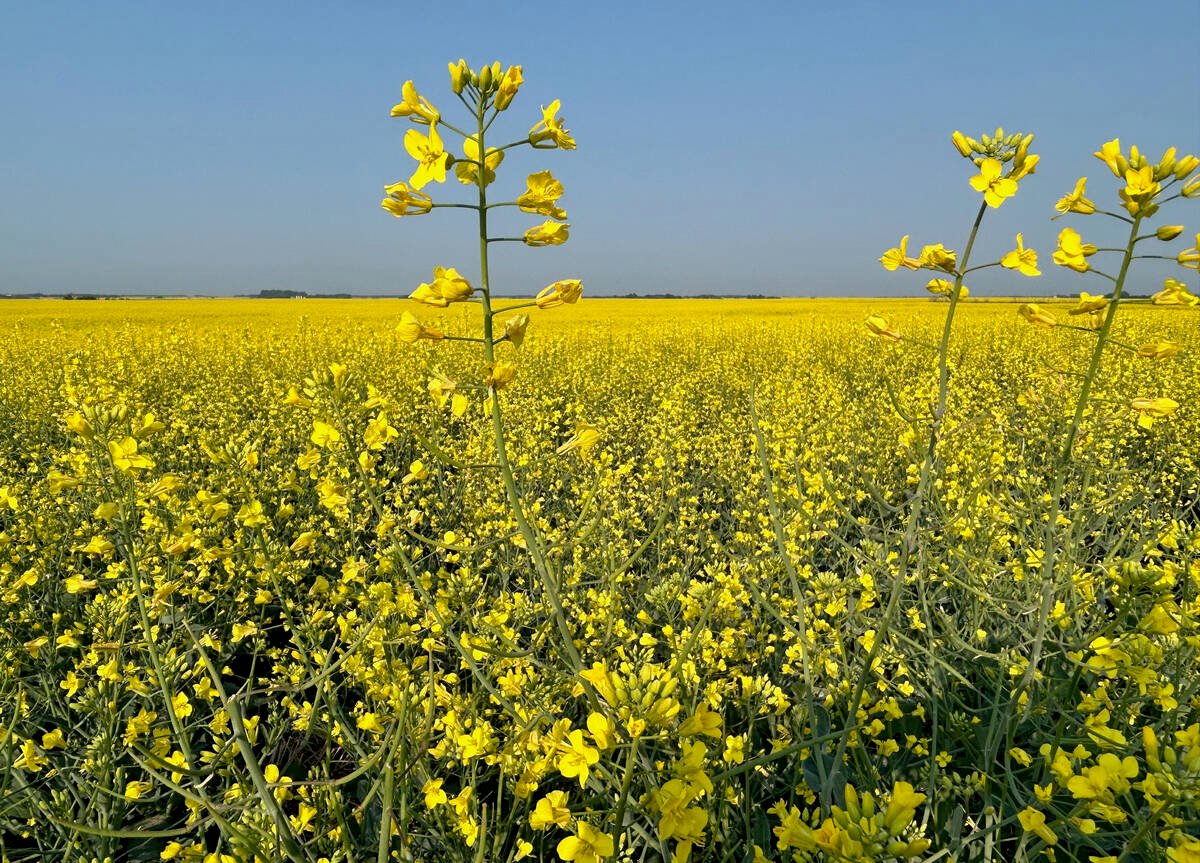KELSEY, Alta. – On a cold winter day Nov. 20, 60 farmers started their grain trucks, pulled their augers to the railway line and loaded 70 producer cars in an attempt to change the way grain is hauled in their area.
It’s the first time Rodney Anderson ever loaded a producer car. Previously the Kelsey farmer liked to support his local grain elevators, but they have been demolished and it’s been almost three years since a train came down the CN tracks past the hamlet of Kelsey.
Anderson and 60 other farmers in the Battle River Producer Car Group want to regain control of grain shipping from their communities and save a little money in elevator charges.
Read Also

Record canola harvest expected
Anecdotal reports from agronomists, crop production advisors, landowners and grain industry reps, combined with provincial reports, indicates that canola yields could break the yield record set in 2016
In the process, the farmers may bring some life back into their communities.
“You can’t imagine how nice it was to see that train coming down the line,” said Duane Albers of Heisler as he visited with farmers loading the grain cars in that community.
“It goes to show you maybe the little guy can do something.”
Seventy producer cars were spotted along the Alliance sub, a 95 kilometre piece of straight railway track between Camrose and Alliance through some of the most fertile farmland in the province.
Four cars were spotted at Kelsey, 10 at Rosalind, nine at Heisler, 13 at Forestburg, 15 at Galahad and 19 at Alliance.
Ken Eshpeter, president of the group, said for the first time in months he saw farmers smile.
“They were having fun,” said Eshpeter, who helped other farmers move augers, back up trucks and shovel out the corners of the grain box before he loaded his producer car at Heisler.
“I hope it’s going to be the start of history in the making,” said Eshpeter, who estimates the farmers saved $70,000 in elevation charges by loading the producer cars.
“That’s money that will stay in the community,” said Eshpeter.
For inspiration the group looked east to the success of West Central Road and Rail in Eston, Sask. The Saskatchewan group started loading grain cars along the side of the railway and has since built permanent loading facilities in an attempt to keep local control of grain handling and transportation.
Jerry Weller of Heisler didn’t mind loading grain in the cold. For him, it was an easy way to save about $1,000 in elevation charges and further cost in trucking. The closest elevator is almost 50 km away, compared to six km to the producer car siding.
“I think this is positive. If nothing else, it sends a message to the big companies their elevation is just too high,” said Weller.
Doug Buchholz of Galahad is also tired of how far he has to truck his grain and is willing to work with other farmers to show CN Rail that farmers are willing to supply the grain if CN supplies the service.
“If the railways co-operate, 70 percent of the farmers will start doing this on this line,” said Buchholz, who worked with three other farm families to load eight producer cars.
He hopes once farmers in the area see how well the first producer car shipment went, others will be willing to join in. The group has enough grain committed from local farmers to load another 50 cars before Christmas and 70 cars a month next year.
















